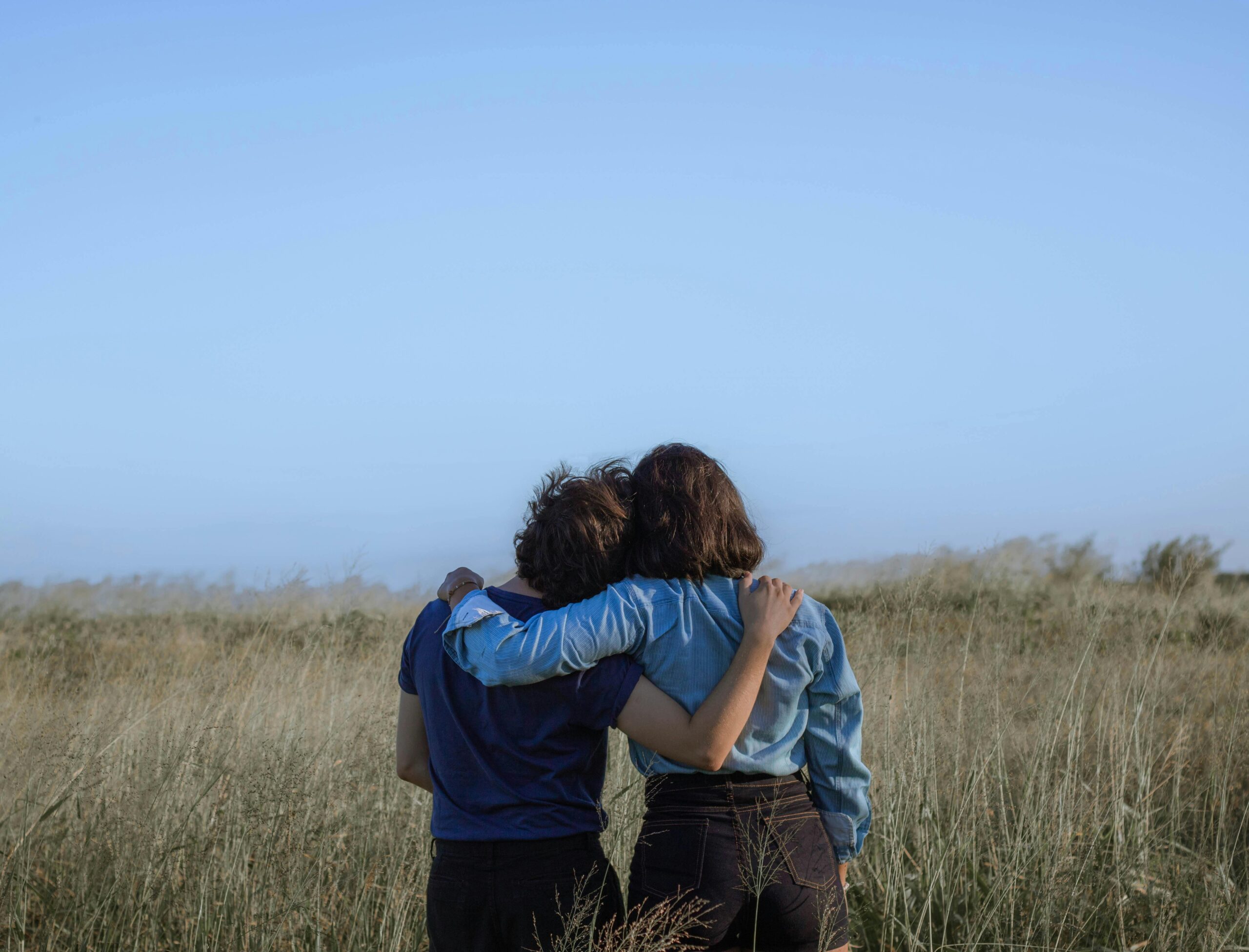
By Shelley Blanton-Stroud, author of ‘TomBoy: A Jane Benjamin Novel’
Author Lisa Selin Davis’s school-age daughter cuts her hair short, wears gym shorts and sweats, and, for dress-up, dons button-down shirts and ties. She has done so since she was three years old. In the first grade, she announced that she was a tomboy, “a girl who has short hair and likes sports.”
Davis started exploring the historical and sociological evolution of the tomboy in order to better understand and support her daughter, and that exploration led her to write the 2019 book, ‘Tomboy: The Surprising History and Future of Girls Who Dare to be Different’.
Davis’s daughter doesn’t understand the kindly teachers and neighbors who regularly insist on re-confirming her gender. I’m a girl, she answers, exasperated. Davis says her daughter is not what so many of the adults around her want to call her–gender nonconforming. Instead, Davis says her daughter “is gender role nonconforming.” She is a girl who defines girlhood her own way, which may not be the way you define it. Her definition of girl includes many of the rambunctious behaviors and style choices conventionally associated with acceptable boyhood.
Her definition makes sense to me. But Selin reports that people don’t really believe it when her daughter says it. They want to put her in a different box.
This is almost exactly the way Jane Benjamin feels. She’s the protagonist of my historical novel series set in the 1930s, ‘Tomboy’ (Paperback, June 28, 2022). When questioned about her sartorial choices—men’s pants and shoes, jacket, fedora, she says, “I don’t want to be a boy. I like who I am. I want to be who I am. But I want to be it the way I want to be it. I don’t have a word for it. Tomboy works for you. I don’t want just one word for me. Unless it’s best.”
Jane doesn’t have it all worked out. As her author, I don’t have it all worked out. I don’t know exactly who she’ll become in the many decades over which this series takes place. What kind of iconic old gossip columnist will she be at 85? I don’t know yet.
Book club members often ask me about Jane, about the way she seriously loves wearing that fedora, pants with big pockets and clunky, wide-soled shoes. They ask, Is she gender fluid? Is she lesbian? Is she trans?
I don’t know exactly how to answer this. But I do know she’s a tomboy. That much is clear.
There’s a grand tradition of literary tomboys, including some of the most familiar: Jo March (Little Women), Scout Finch (To Kill a Mockingbird), Laura Ingalls (Little House on the Prairie), Katniss Everdeen (Hunger Games). These are ambitious, indelicate girls who aim high, fall regularly, scramble and fight back, often having to earn, not inherit or be given, the love and respect of the characters around them.
I wanted Jane to be a part of that tradition. But I didn’t want her to experience what so many literary tomboys do. I didn’t want her to be tamed in the final act.
Even before the 1860’s, when Little Women was written, readers have loved and related to young girl characters who cross over into conventionally boyish behavior. Up to a point.
Davis reports that readers like girls to travel through tomboy terrain, but not to live there forever. She says such girls are smiled at by readers through puberty but not after. This may explain why so many literary tomboys get remade. Think of Shakespeare’s Taming of the Shrew, of difficult Kate remade into compliant Kate.
When I was a girl, my father, the superintendent of a rural K-12 school district that all fit on one campus, would take me and my brother to school on weekends, presumably to get us out of our mother’s hair. While my father worked in his office on administrative tasks, my brother rode his bike all over, played tetherball, all that. I asked my father to unlock the school library, where I would sit all day and read. My love of reading emerged from that split-pea-colored library, its dusty shelves, its long, empty tables, its hard wooden chairs. Locked in that library, I began with the A’s. Louisa May Alcott. Little Women.
I read that book so many times. I would finish and begin again. I didn’t want a different book to break the spell. For such a self-cloistered kid, I was utterly taken by the rambunctious, adventurous, play-acting, hill-dashing, ice-skating Jo March. But, of course, I probably wouldn’t have liked her so much if she didn’t also always have her nose in a book and ink stains on her fingers.
I’d say I loved everything about it, but that’s not true. I didn’t love everything about it.
Jo spends the whole book claiming she’ll never marry or have children. She wants to be a writer. She chafes at caretaking of any kind.
But then, after Beth dies and Meg and Amy marry off (Amy to Jo’s best friend and spurned suitor Laurie), bereft and jealous Jo meets what I considered to be a very old man, Mr. Baer, and marries him, supposedly because he’s intellectual. She has a passel of kids and runs a family-based school. She becomes a wife, a mom and a teacher and lives happy ever after.
The tomboy has been tamed.
Even as I read and reread this as a girl, I felt mixed reactions. First, I didn’t believe it. I thought Jo would never turn into Mrs. Baer. If she were going to marry, I thought, it would be someone she could alternately boss around and have fun with, like Laurie.
And it pains me now to realize, I think I was a little relieved at her turn. I was worried that Jo’s tomboyishness would render her loveless and alone, a spinster. I bought into Alcott’s soft-focused ending, her tomboy tamed, her gender-role nonconforming girl, re-conformed.
Sadly, I may have been the kind of reader Alcott’s publisher was thinking of, a reader who needed reassurance that a tomboy can recover enough of her conventional femininity in adulthood to win social approval.
This is why I adore filmmaker Greta Gerwig’s 2019 remake of Little Women. She ends with the Baer/March Family pastiche, all gold-hued domesticity, Jo carrying a homemade cake to her parents’ table through a tableau of family activity in a blooming garden, a collaborative, communal school run by Jo and her sisters and their husbands and her parents and their children.
But then the movie repeatedly interrupts that scene with footage implying that golden soft focus is false, invented by the author Jo March, who has actually made a practical, commercial decision to give the readers what they want, a beautiful, tamed, non-tomboy life for her fictional self, even if it isn’t what she wants.
In Gerwig’s film, we, the contemporary audience, are treated to the real happy ending—Jo March watching pages cut, cover folded and glued, her novel being made into a physical book. We see the red leather-bound prize placed in her hand, her name gold-embossed, as independent fulfillment shines on her face, flush as a bride, loyal to her family, but married to her work. A tomboy untamed.
The gap between these two endings—communal and individual—is something my Jane will face over the decades of my series. I don’t know where she’ll land, tamed or untamed. Or maybe, like most of us, a little of both, inconclusive. Nonconforming.

Shelley Blanton-Stroud grew up in California’s Central Valley, the daughter of Dust Bowl immigrants who made good on their ambition to get out of the field and into the city. She taught college writing for three decades and consults with writers in the energy industry. She co-directs Stories on Stage Sacramento, where actors perform the stories of established and emerging authors, and she serves on the advisory board of 916 Ink, an arts-based creative writing nonprofit for children. Tomboy is the second book in her Jane Benjamin series. Her debut novel, Copy Boy, was the first. Shelley and her husband live in Sacramento with an aging beagle and many photos of their out-of-state sons. You can follow Shelley on Facebook, Twitter and Instagram.
















